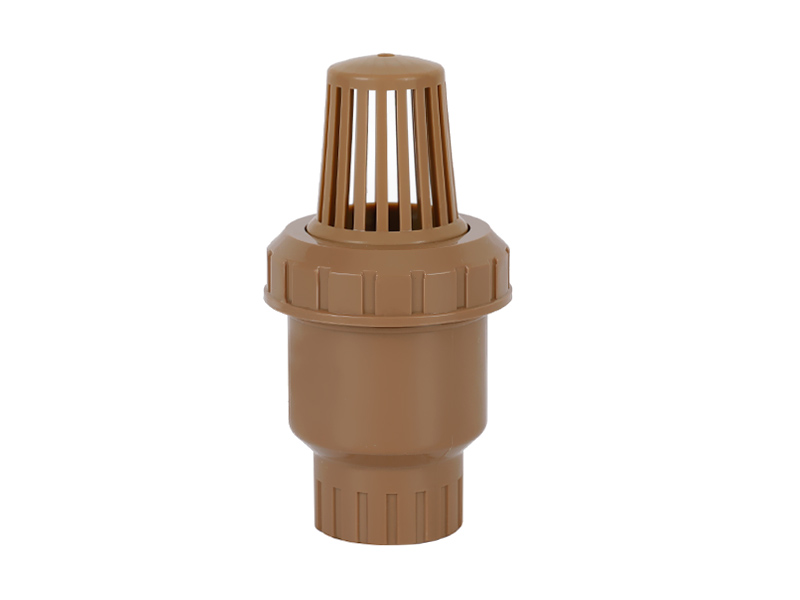How does the male ball valve design enable smooth and effortless on/off operation?
The male ball valve design is a key characteristic...
MORE >>















A foot valve is a specialized type of check valve that […]
A foot valve is a specialized type of check valve that finds its utility primarily in applications involving the pumping of liquids, especially those drawn from a well or other water sources. Its design and functionality address specific challenges associated with these scenarios. In this explanation, we'll explore the situations in which a foot valve proves particularly useful, as well as the limitations and considerations that need to be taken into account when using one.
Useful Situations:
Well Pumping Systems: Foot valves are commonly employed in well pumping systems. When a pump draws water from a well, there's a risk of losing prime (the water that is used to initiate the pumping action) if the pump loses suction. A foot valve's primary advantage is its ability to retain water in the pump and suction line, thereby preventing the pump from losing prime during periods of low water levels or air intrusion.
Surface Water Pumping: In scenarios where water is sourced from lakes, rivers, or ponds, foot valves are essential. These water sources might have fluctuating water levels due to environmental factors or human usage. A foot valve ensures that the pump remains primed even when the water level drops temporarily.
Debris-Prone Environments: Foot valves often incorporate strainers or screens to prevent debris such as leaves, sticks, and sediment from entering the pump. This feature is particularly useful in locations with high levels of suspended solids, as it protects the pump from damage and clogging.
Remote Locations: In remote or off-grid areas where water supply is sourced from natural sources like wells, springs, or creeks, a foot valve's ability to maintain prime is crucial. It reduces the need for constant manual priming, ensuring a consistent water supply even when the pump operates intermittently.

Limitations and Considerations:
Sediment Accumulation: While foot valves are designed to prevent debris from entering the pump, they can accumulate sediment or small particles over time. This can reduce the efficiency of the valve and restrict flow. Regular maintenance and cleaning of the valve and strainer are necessary to prevent this issue.
Strainer Clogging: In environments with heavy debris loads, the strainer on a foot valve can clog relatively quickly. This not only hampers the valve's performance but also increases the load on the pump, potentially leading to decreased efficiency and increased energy consumption.
Material Compatibility: The materials used in the construction of the foot valve need to be compatible with the fluid being pumped. Corrosive or abrasive fluids might require specialized materials to ensure longevity and optimal performance.
Risk of Air Ingress: While a foot valve helps maintain prime during normal operation, it is not completely immune to air intrusion. If the water source experiences severe fluctuations in water levels, or if the valve isn't functioning properly, air could enter the pump system. This can lead to loss of prime, reduced pump efficiency, and increased wear and tear.
Check Valve Mechanism: Foot valves are essentially a type of check valve, and like other check valves, they have inherent limitations in terms of flow resistance. In applications requiring high flow rates, foot valves might introduce some resistance, affecting the overall system efficiency.
Depth Limitation: Foot valves have limitations in terms of the depth from which they can effectively draw water. As the depth increases, the weight of the water column above the valve can create significant pressure, potentially causing the valve to close prematurely due to water pressure. This limitation might require the use of additional mechanisms or specialized foot valve designs for deeper installations.
In conclusion, a foot valve is particularly useful in situations where maintaining pump prime, preventing debris from entering the pump, and ensuring a steady water supply are paramount. It addresses challenges associated with well and surface water pumping, especially in remote or debris-prone environments. However, users must be aware of the limitations related to sediment accumulation, strainer clogging, material compatibility, air ingress, and the check valve mechanism. By carefully considering these factors and performing regular maintenance, foot valves can enhance the reliability and efficiency of pumping systems, ensuring a consistent water supply even in challenging conditions.

The male ball valve design is a key characteristic...
MORE >>
In today's modern world, efficient and reliable wa...
MORE >>
Copyright ©All rights reserved:Zhejiang Xier Plastic Valve Lead Co.,LTD. PVC Ball Valves Manufacturers Technical support: HWAQ  浙公网安备 33060402001174号
浙公网安备 33060402001174号

 English
English España
España عربي
عربي